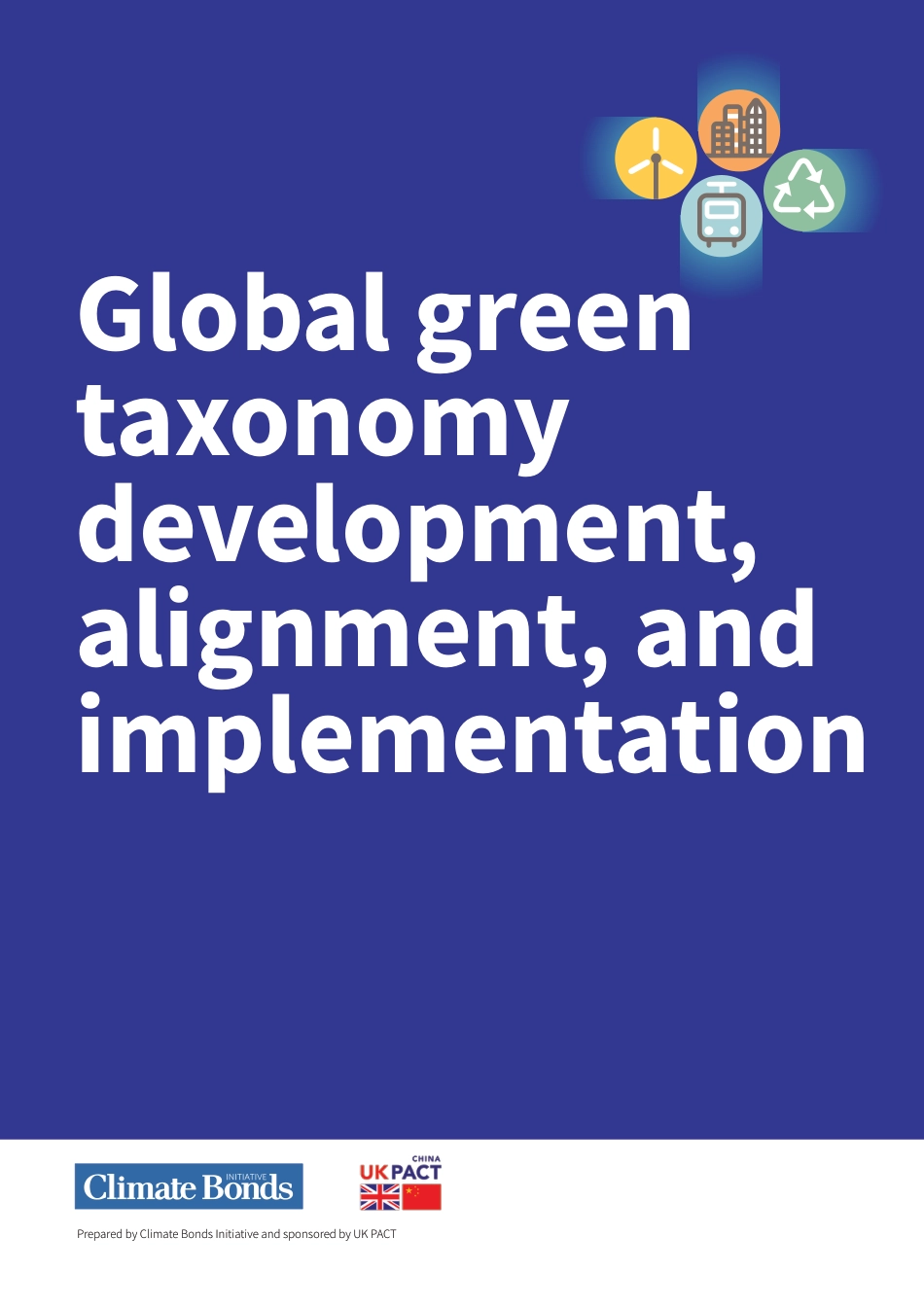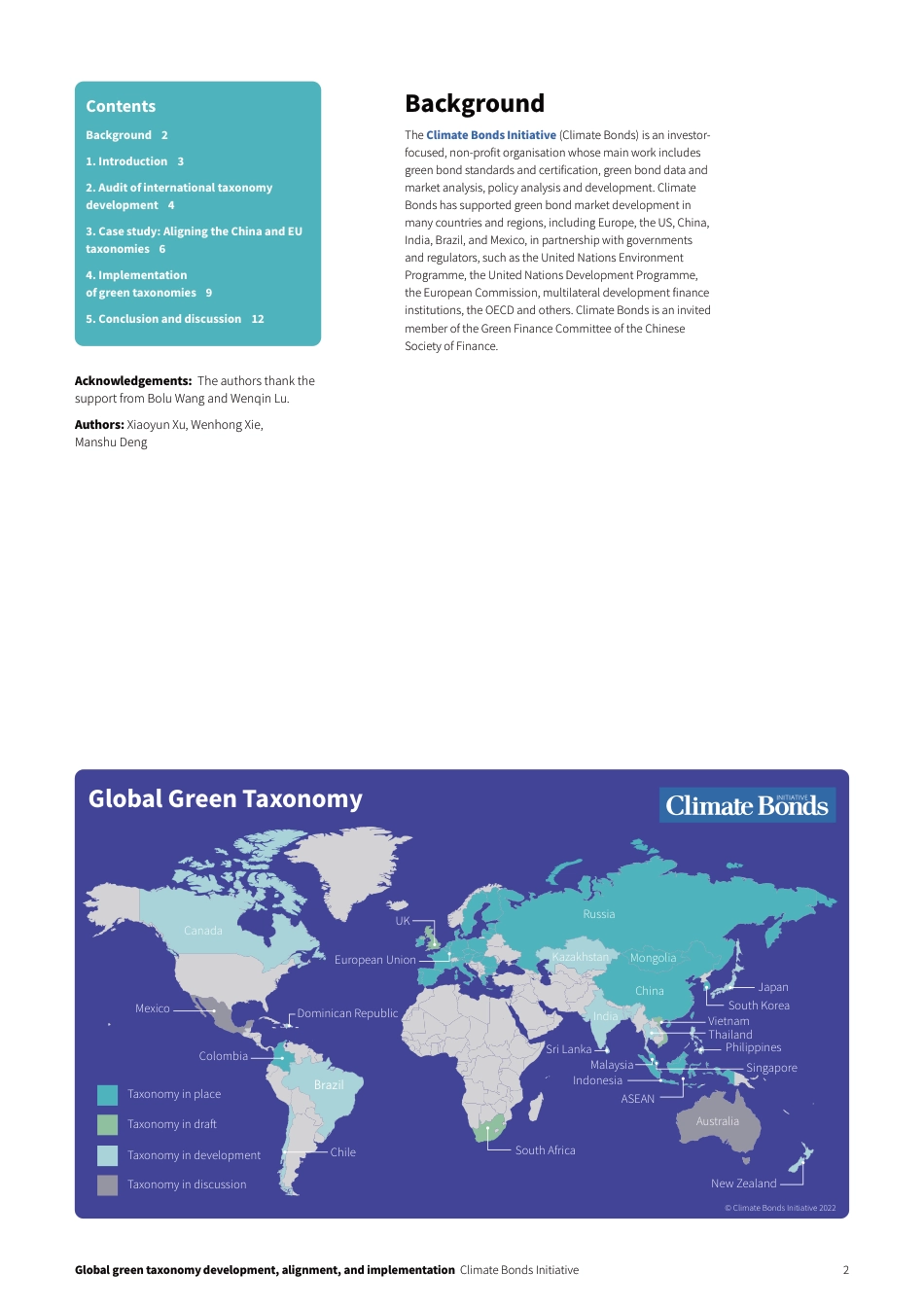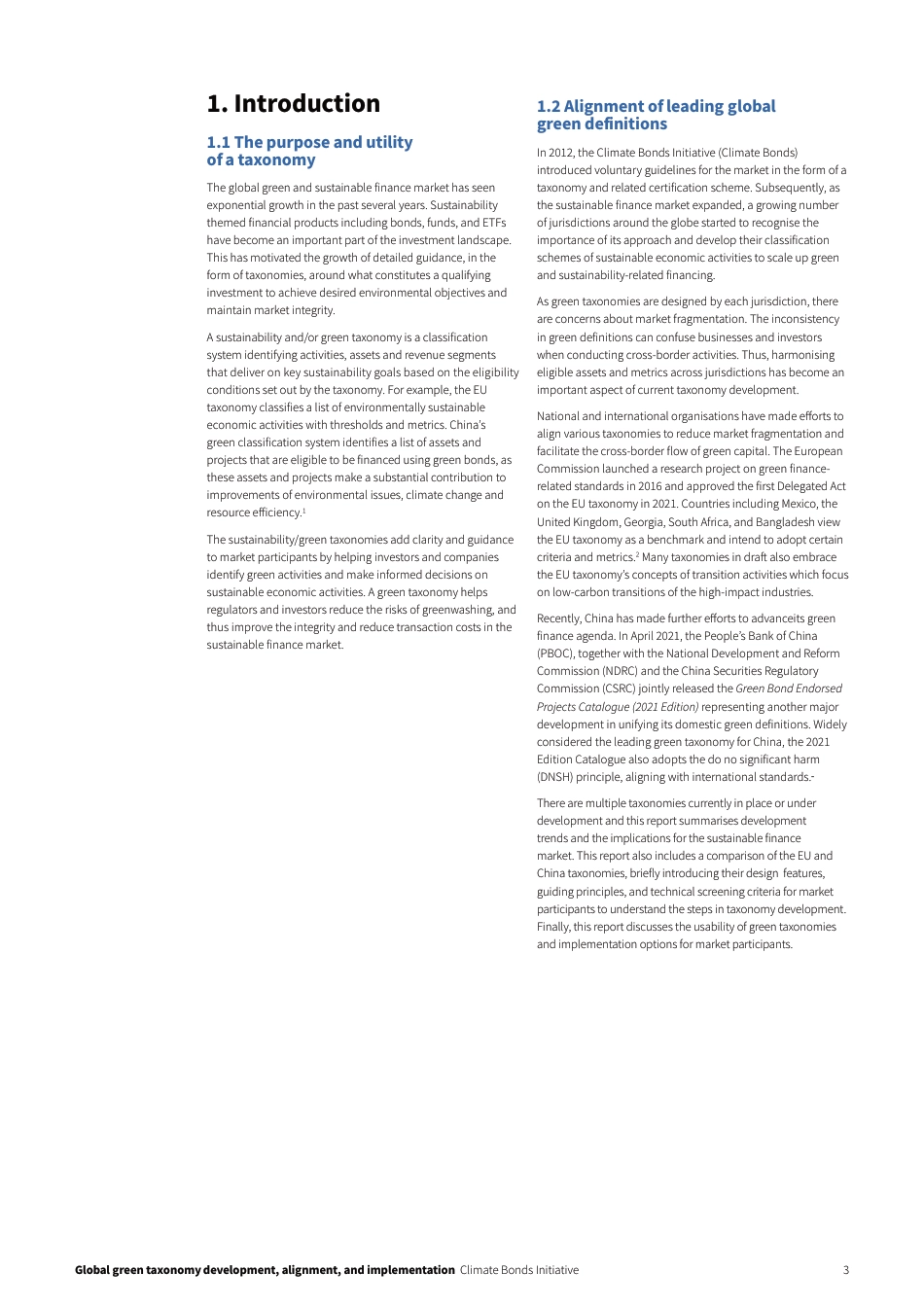Prepared by Climate Bonds Initiative and sponsored by UK PACTGlobal green taxonomy development, alignment, and implementationGlobal green taxonomy development, alignment, and implementation Climate Bonds Initiative 2Taxonomy in placeTaxonomy in draftMexicoUKEuropean UnionChileColombiaBrazilAustraliaRussiaChinaMongoliaIndiaSingaporeThailandKazakhstanNew ZealandSouth AfricaSouth KoreaDominican RepublicPhilippinesVietnamJapanIndonesiaASEANMalaysiaSri LankaCanadaGlobal Green Taxonomy© Climate Bonds Initiative 2022BackgroundThe Climate Bonds Initiative (Climate Bonds) is an investor-focused, non-profit organisation whose main work includes green bond standards and certification, green bond data and market analysis, policy analysis and development. Climate Bonds has supported green bond market development in many countries and regions, including Europe, the US, China, India, Brazil, and Mexico, in partnership with governments and regulators, such as the United Nations Environment Programme, the United Nations Development Programme, the European Commission, multilateral development finance institutions, the OECD and others. Climate Bonds is an invited member of the Green Finance Committee of the Chinese Society of Finance.ContentsBackground 21. Introduction 32. Audit of international taxonomy development 43. Case study: Aligning the China and EU taxonomies 64. Implementation of green taxonomies 95. Conclusion and discussion 12Acknowledgements: The authors thank the support from Bolu Wang and Wenqin Lu.Authors: Xiaoyun Xu, Wenhong Xie, Manshu DengTaxonomy in developmentTaxonomy in discussionGlobal green taxonomy development, alignment, and implementation Climate Bonds Initiative 31. Introduction 1.1 The purpose and utility of a taxonomyThe global green and sustaina...



